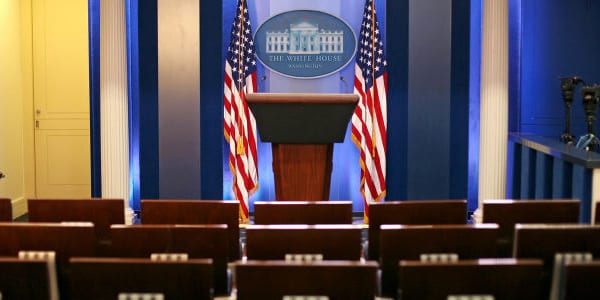 Every new presidential administration brings changes along with it. Since President Trump’s inauguration, the public relations discipline is already adapting to this new normal. I recently spoke on a PR Council panel about how to effectively communicate in a “Trump World.” Perhaps the most discussed topic was that, even though the President has only been in office for a couple of weeks, the rules of engagement have drastically changed.
Every new presidential administration brings changes along with it. Since President Trump’s inauguration, the public relations discipline is already adapting to this new normal. I recently spoke on a PR Council panel about how to effectively communicate in a “Trump World.” Perhaps the most discussed topic was that, even though the President has only been in office for a couple of weeks, the rules of engagement have drastically changed.
From “Skype seats” in the White House briefing room to “guidance” on how reporters should cover the administration, the media landscape has been democratized and communicators need a new playbook for how to engage with influencers and reporters. Furthermore, how communicators and others are adapting to the landscape is an important and evolving case study for the public relations discipline.
Below are four key changes impacting the media landscape and the implications of each…
1. Using Skype Calls in the White House Briefing Room:
Last week journalists from Rhode Island, Ohio, Oregon and Kentucky appeared on television screens in the White House briefing room for the daily briefing, and their questions were interspersed with those asked by reporters in the room. This is the first time in history this venue has been open to reporters not based in Washington, thereby democratizing the questions posed to the White House. The implications of this change are twofold.
- The most obvious is the use of technology to enhance access to press briefings. Skype, the world’s largest video calling service, had the opportunity to showcase their technology for something unconventional yet relevant to communicators.
- The other implication is pitching and reporting on happenings in Washington won’t come exclusively from “inside the beltway.” As communicators build plans they should consider how to reach stakeholders from nontraditional media sources outside of top-tier outlets such as local media sources and credible blogs.
2. Pitching Reporters and Covering the Trump Administration:
As the press continues to adjust to President Trump and the new administration, a pair of internal memos circulated within news organizations last week providing guidance to reporters on how to cover the Trump Administration. Last week Reuters editor-in-chief Steve Adler wrote in a memo to staffers and the Wall Street Journal editor in chief Gerard Baker sent an email to editors on how to discuss elements of Trump’s proposed travel ban.
- The implication here is both the press AND communicators are grappling with rules of engagement for covering the President.
3. Identifying and Activating Influencers:
Communicators should evaluate both their internal and external communications plans to ensure all communications align with their mission and values. One way to refresh existing plans is to identify, educate and activate influencers, particularly those who are perceived as credible by your key stakeholders, to amplify your internal and external communications.
- Whenever communicators work with influencers, it’s important to have a long-term strategy to generate stakeholder support that goes beyond a one-off content creation opportunity. Influencers should add value to your communications strategy by generating and encouraging conversations that go beyond an immediate communications opportunity.
- For instance, if you plan to make an announcement about your economic impact in a community, having influencers such as the local Chamber of Commerce and/or economic advisory commission could further validate your message and broaden your reach.
4. Creating Alignment Among Functions for Multiple Purposes:
With the news cycle approaching a near breakneck pace, companies and organizations need to create a system for evaluating existing, nascent and future communications plans. Now more than ever it is important to have cross-function alignment with communicators, government relations, public affairs, operations, finance and others sharing their goals and messaging for both internal and external audiences to ensure risk mitigation.
- Companies and organizations should evaluate internal plans and activations to ensure they are still relevant and strategically implemented. As Rob Flaherty, partner, chairman and CEO of Ketchum, said in Advertising Age there’s a growing expectation for CEOs and companies to at least decide if they’re going to comment on social issues. If they do, they must be clear in their statements.
- Leaders should also proactively assess their organization’s strengths and weaknesses. Organizations are now being scrutinized under the lens of whether they are helping or hurting the U.S. economy and if they are consistent in their values and mission both internally and externally.
Most importantly, while communicators’ and reporters’ jobs are shifting, it’s important to remember not to overreact. As with any change, there will be case studies of successes and challenges. What matters most is how leaders react during times of success, missteps and everything in between to ensure they remain true to their organization’s values and mission.
KayAnn recently sat down with WUSA9 to discuss the new normal in U.S. politics and when it makes sense for brands and public figures to speak publicly on political issues. Watch the full interview here.